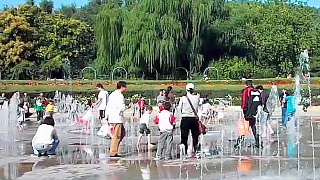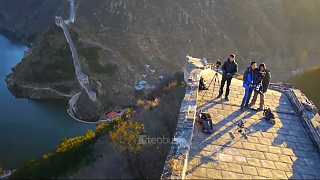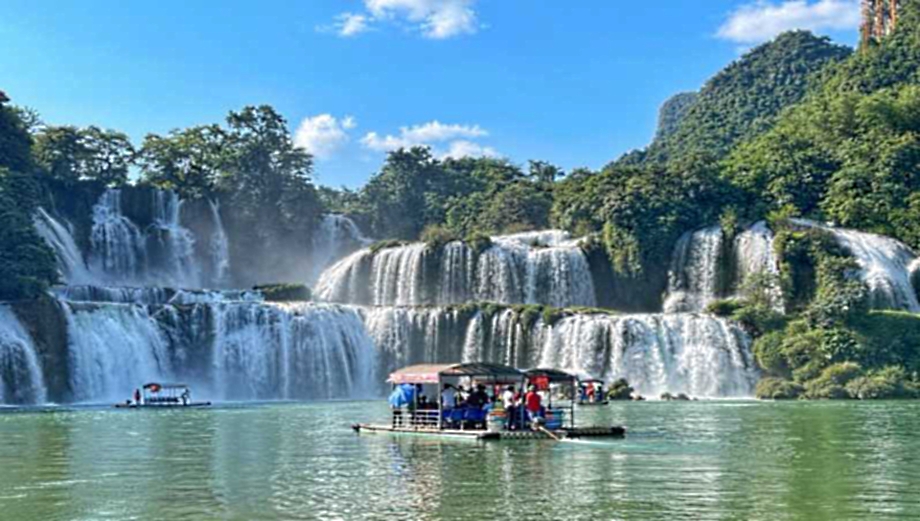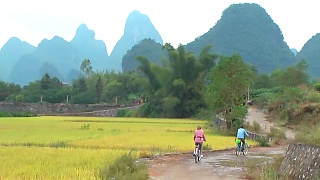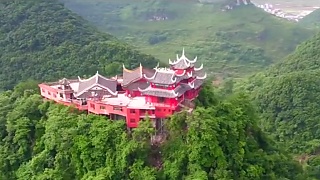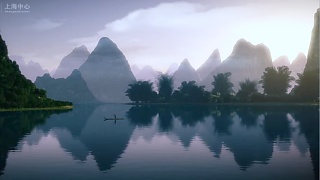
|
Places to visit in and around NanJing
Dr. Sun Yat-sen's Mausoleum (中山陵) - Zhōngshān Líng
Description: Dr. Sun Yat-sen's Mausoleum is a memorial site dedicated to the founding father of the Republic of China, located at the foot of Purple Mountain. Visitors can climb the grand staircase to reach the mausoleum, explore the surrounding parkland, and pay homage to Dr. Sun Yat-sen at his final resting place.
Confucius Temple (夫子庙) - Fūzǐ Miào
Description: Confucius Temple is a historic complex dedicated to the ancient Chinese philosopher Confucius. The temple features traditional architecture, tranquil courtyards, and cultural relics, as well as bustling markets, teahouses, and street performances. Visitors can experience the vibrant atmosphere and pay tribute to Confucius' teachings and legacy.
Nanjing City Wall (南京城墙) - Nánjīng Chéngqiáng
Description: Nanjing City Wall is one of the best-preserved ancient city walls in China, dating back over 600 years. Visitors can walk or cycle along the wall's ramparts, gates, and watchtowers, enjoying panoramic views of the cityscape and surrounding scenery. The wall offers insights into Nanjing's rich history and architectural heritage.
Xuanwu Lake (玄武湖) - Xuánwǔ Hú
Description: Xuanwu Lake is a scenic freshwater lake located in the heart of Nanjing, surrounded by parks, gardens, and historic landmarks. Visitors can take leisurely boat cruises, stroll along lakeside promenades, and enjoy recreational activities such as cycling, picnicking, and birdwatching amidst serene natural surroundings.
Jiming Temple (鸡鸣寺) - Jīmíng Sì
Description: Jiming Temple is a renowned Buddhist temple perched on the slopes of Purple Mountain, offering panoramic views of Nanjing. The temple complex features ancient pagodas, halls, and gardens, as well as cultural relics and religious artifacts. Visitors can explore the tranquil grounds, attend Buddhist ceremonies, and admire the temple's architectural beauty.
Nanjing Museum (南京博物院) - Nánjīng Bówùyuàn
Description: Nanjing Museum is one of China's largest and most comprehensive museums, showcasing the history, art, and culture of Nanjing and the Jiangsu province. The museum's extensive collections include archaeological artifacts, fine art, ceramics, and cultural relics, as well as interactive exhibits, educational programs, and temporary exhibitions.
Presidential Palace (总统府) - Zǒngtǒng Fǔ
Description: Presidential Palace is a historic complex serving as the former official residence of Chinese presidents. The palace features traditional Chinese architecture, landscaped gardens, and historical exhibitions, offering insights into China's modern history and political developments. Visitors can explore the ornate halls, courtyards, and memorial halls, as well as attend cultural events and performances.
Nanjing Yangtze River Bridge (南京长江大桥) - Nánjīng Chángjiāng Dàqiáo
Description: Nanjing Yangtze River Bridge is a landmark bridge spanning the Yangtze River, connecting the districts of Pukou and Xiaguan. The bridge offers panoramic views of the river, city skyline, and surrounding landscapes, as well as opportunities for sightseeing, photography, and enjoying the scenic riverfront.
Porcelain Tower of Nanjing (南京瓷塔) - Nánjīng Cítǎ
Description: Porcelain Tower of Nanjing is a historic pagoda renowned for its exquisite architecture and ornate porcelain decorations. Originally built in the 15th century, the pagoda was reconstructed in the 21st century and now serves as a cultural landmark and museum. Visitors can admire the pagoda's intricate design, learn about its history, and enjoy panoramic views from the top.
Ming Xiaoling Mausoleum (明孝陵) - Míng Xiàolíng
Description: Ming Xiaoling Mausoleum is the final resting place of Emperor Zhu Yuanzhang, the founder of the Ming Dynasty, and his empress. Located at the foot of Purple Mountain, the mausoleum complex features grand gateways, sacred pathways, and ancient stone sculptures, as well as serene forested surroundings ideal for contemplation and reflection.
Nanjing Drum Tower (南京鼓楼) - Nánjīng Gǔlóu
Description: Nanjing Drum Tower is a historic landmark dating back to the Ming Dynasty, located in the heart of Nanjing's city center. The tower once served as a military command post and timekeeping facility, and today houses a museum showcasing Nanjing's cultural heritage. Visitors can climb to the top for panoramic views of the city and learn about the tower's history and significance.
Xiaoling Tomb of the Ming Dynasty (明孝陵) - Míng Xiàolíng
Description: Xiaoling Tomb is the burial site of Emperor Zhu Yuanzhang, the founding emperor of the Ming Dynasty, and his empress. Located at the foot of Purple Mountain, the tomb complex encompasses grand gateways, pathways, and scenic gardens, as well as historical artifacts and sculptures. Visitors can explore the serene surroundings, pay respects to the Ming Dynasty's founder, and learn about imperial burial customs.
Nanjing Museum of Paleontology (南京古生物博物馆) - Nánjīng Gǔshēngwù Bówùguǎn
Description: Nanjing Museum of Paleontology is dedicated to the study and exhibition of fossils and prehistoric artifacts. The museum's collections include dinosaur fossils, ancient plants, and geological specimens, as well as interactive exhibits and educational programs exploring Earth's natural history and evolution.
Nanjing Presidential Palace (南京总统府) - Nánjīng Zǒngtǒng Fǔ
Description: Nanjing Presidential Palace is a historic complex serving as the former official residence of Chinese presidents. The palace features traditional Chinese architecture, landscaped gardens, and historical exhibitions, offering insights into China's modern history and political developments. Visitors can explore the ornate halls, courtyards, and memorial halls, as well as attend cultural events and exhibitions.
Jiming Temple Scenic Area (鸡鸣寺风景名胜区) - Jīmíng Sì Fēngjǐng Míngshèng Qū
Description: Jiming Temple Scenic Area encompasses the historic Jiming Temple complex, as well as surrounding parks, gardens, and cultural landmarks. Visitors can explore ancient temples, pagodas, and stone inscriptions, as well as enjoy scenic walks, cultural performances, and panoramic views of Nanjing's skyline.
Mochou Lake Park (莫愁湖公园) - Mòchóu Hú Gōngyuán
Description: Mochou Lake Park is a scenic parkland surrounding Mochou Lake, offering a tranquil retreat amidst Nanjing's urban landscape. Visitors can stroll along lakeside promenades, admire seasonal flowers and gardens, and enjoy recreational activities such as boating, fishing, and picnicking. The park also features cultural attractions, pavilions, and historic sites.
Nanjing Drum Tower (南京鼓楼) - Nánjīng Gǔlóu
Description: Nanjing Drum Tower is a historic landmark located in the heart of Nanjing's city center, dating back to the Ming Dynasty. The tower once served as a military command post and timekeeping facility, and today houses a museum showcasing Nanjing's cultural heritage. Visitors can climb to the top for panoramic views of the city and learn about the tower's history and significance.
Porcelain Tower Site Park (瓷塔遗址公园) - Cítǎ Yízhǐ Gōngyuán
Description: Porcelain Tower Site Park is a historic site commemorating the location of the former Porcelain Tower of Nanjing, a renowned pagoda destroyed during the Qing Dynasty. The park features archaeological remains, cultural exhibits, and reconstructed pagoda foundations, as well as landscaped gardens, sculptures, and panoramic views of Nanjing's skyline.
Nanjing Botanical Garden (南京植物园) - Nánjīng Zhíwù Yuán
Description: Nanjing Botanical Garden is a vast botanical reserve featuring diverse plant collections, themed gardens, and natural habitats. Visitors can explore walking trails, greenhouses, and scenic viewpoints, as well as participate in educational programs, workshops, and gardening activities. The garden also hosts seasonal flower shows, plant exhibitions, and cultural events throughout the year.
Qinhuai River Scenic Area (秦淮风光带) - Qínhuái Fēngguāng Dài
Description: Qinhuai River Scenic Area is a historic waterfront district renowned for its cultural heritage, scenic landscapes, and traditional architecture. Visitors can take leisurely boat cruises along the river, explore ancient streets and alleys, and admire historic landmarks such as Confucius Temple, Nanjing City Wall, and Zhonghua Gate. The area also offers opportunities for shopping, dining, and experiencing Nanjing's vibrant nightlife.
Nanjing Massacre Memorial Hall (南京大屠杀纪念馆) - Nánjīng Dàtúshā Jìniànguǎn
Description: Nanjing Massacre Memorial Hall is a somber memorial dedicated to the victims of the Nanjing Massacre during World War II. The memorial hall features historical exhibits, documentary films, and testimonies from survivors, as well as educational programs and activities promoting peace, reconciliation, and remembrance.
|
 BeiJing 北京 from the air – a new perspective
BeiJing 北京 from the air – a new perspective





